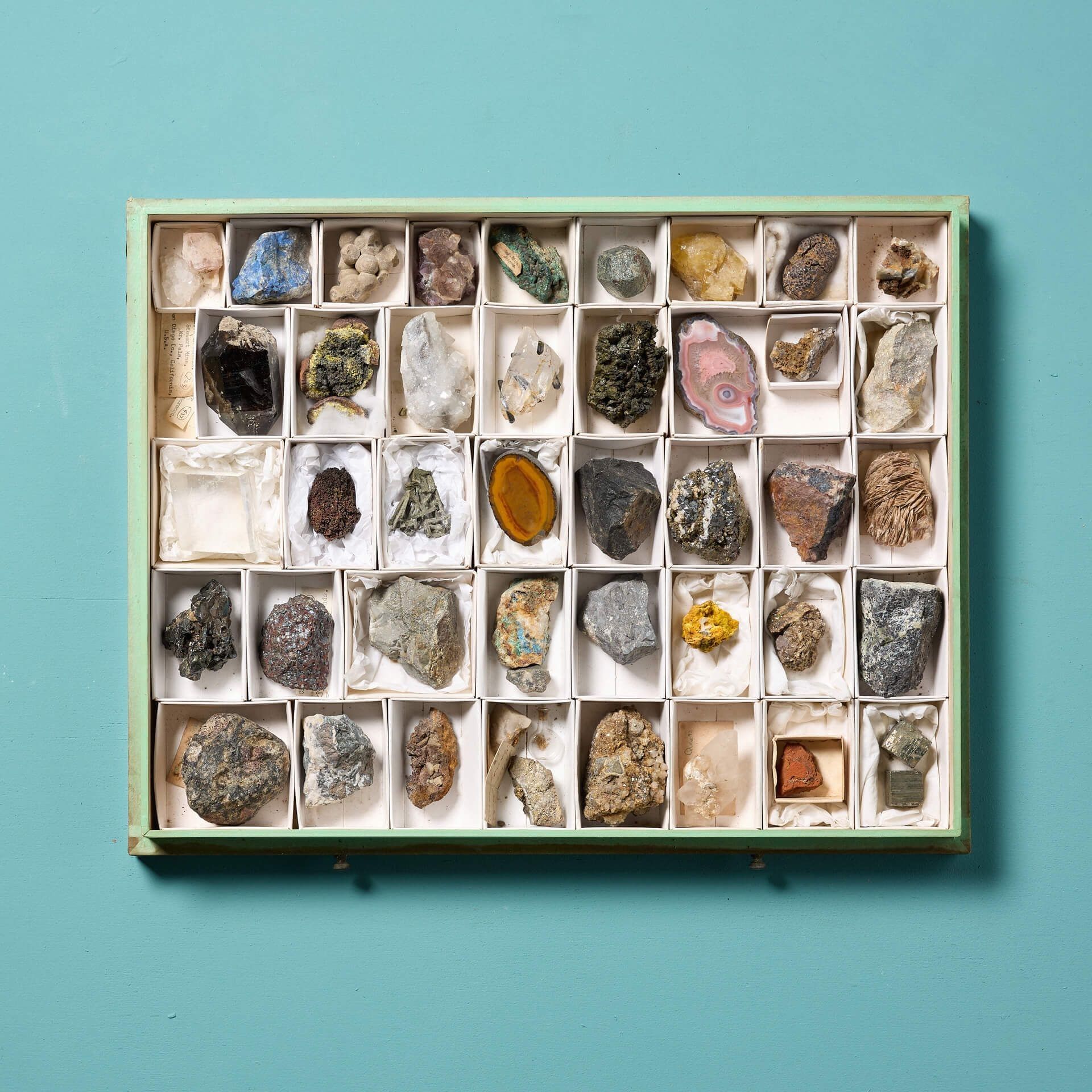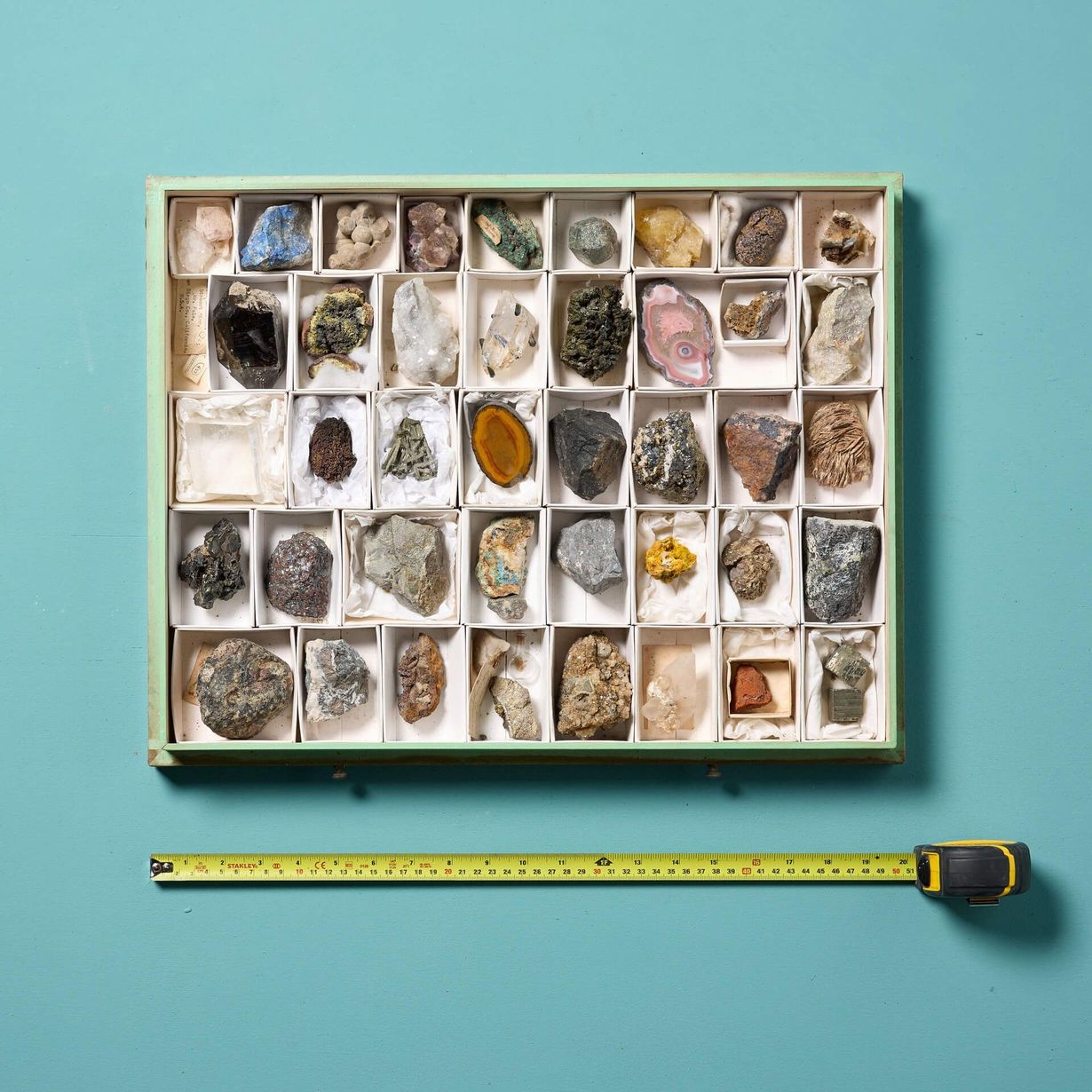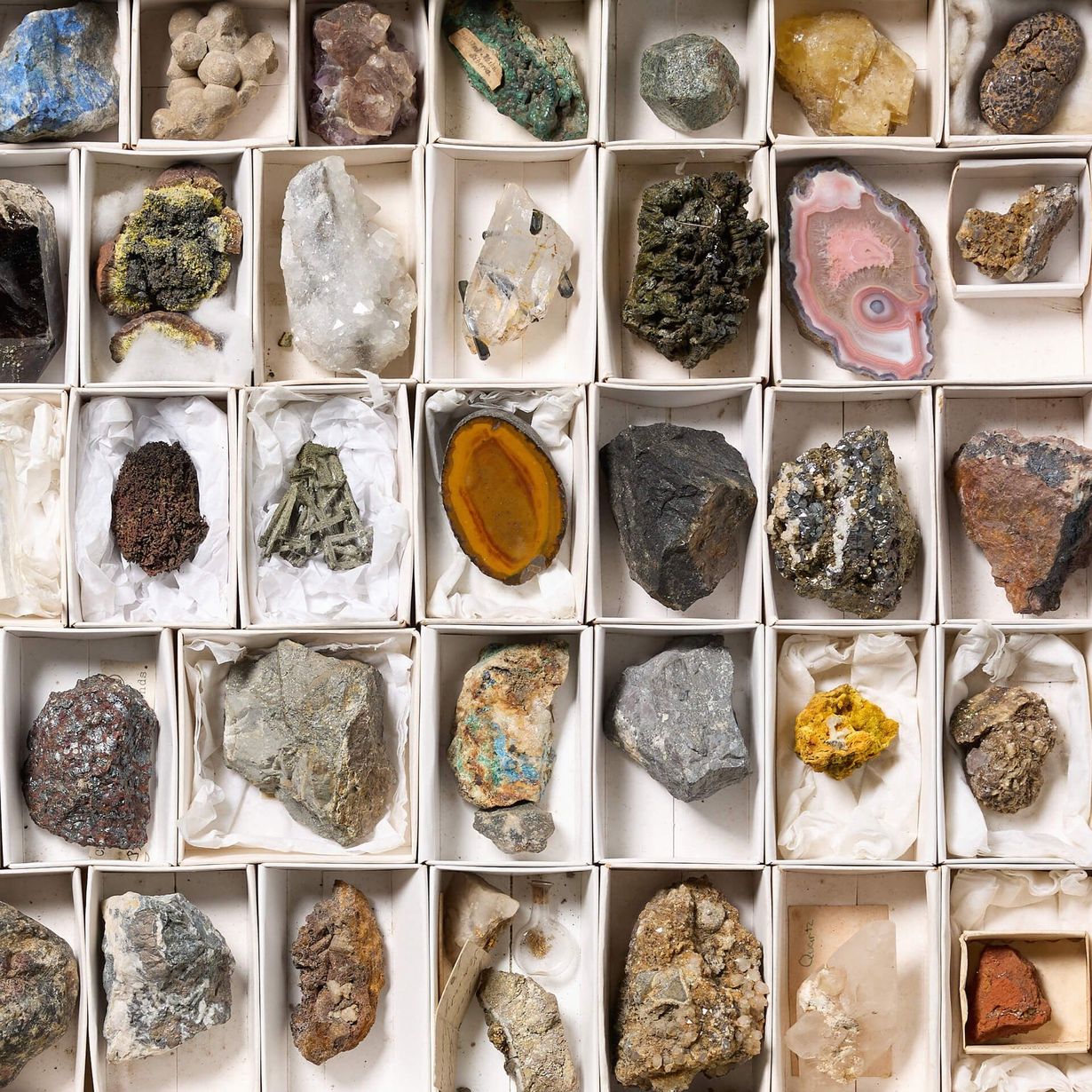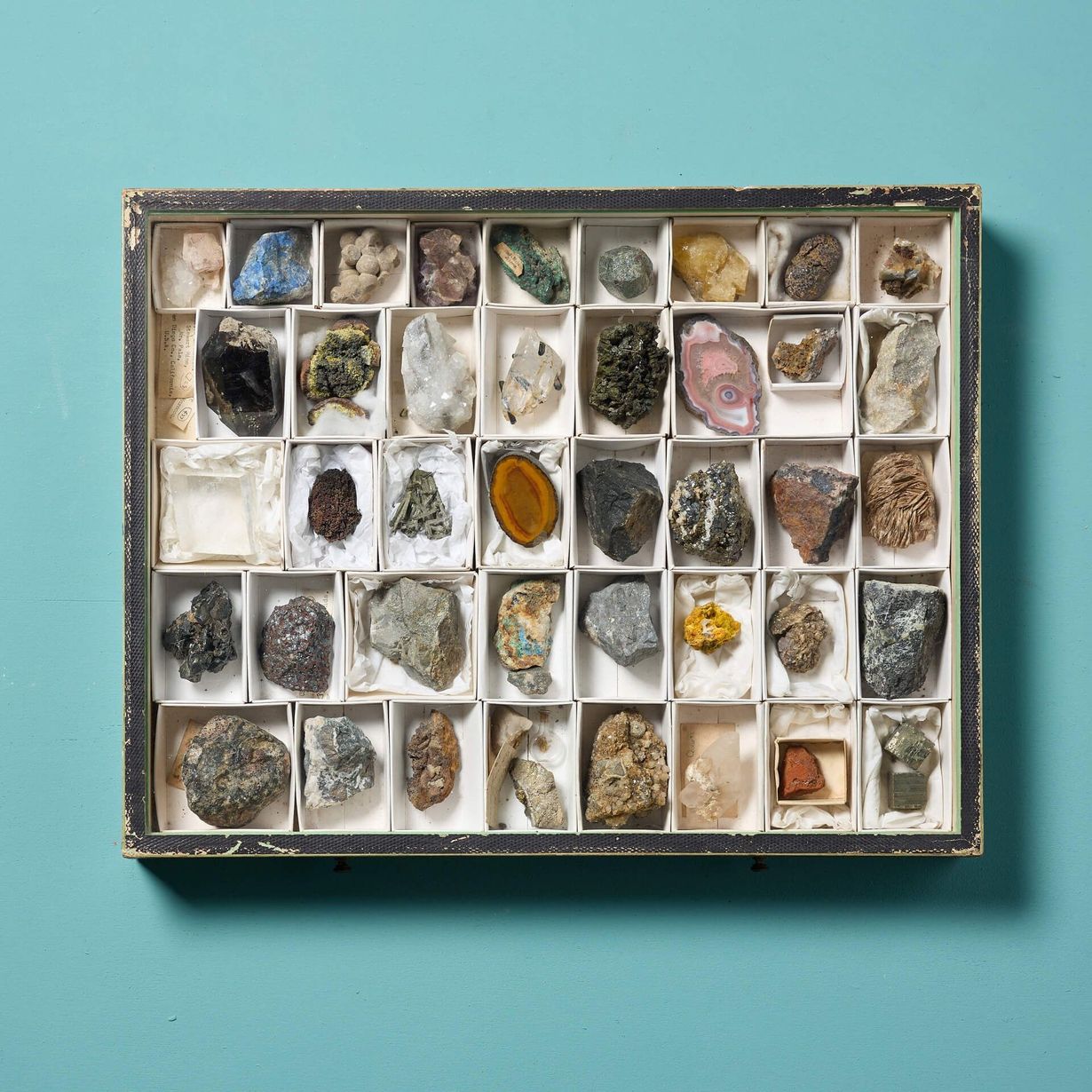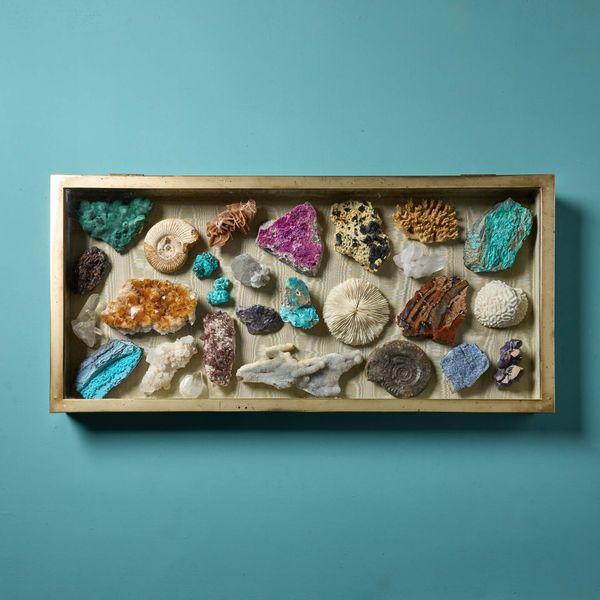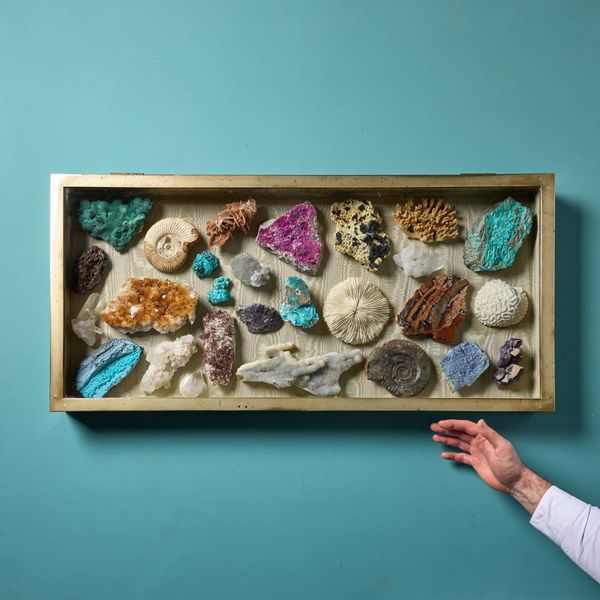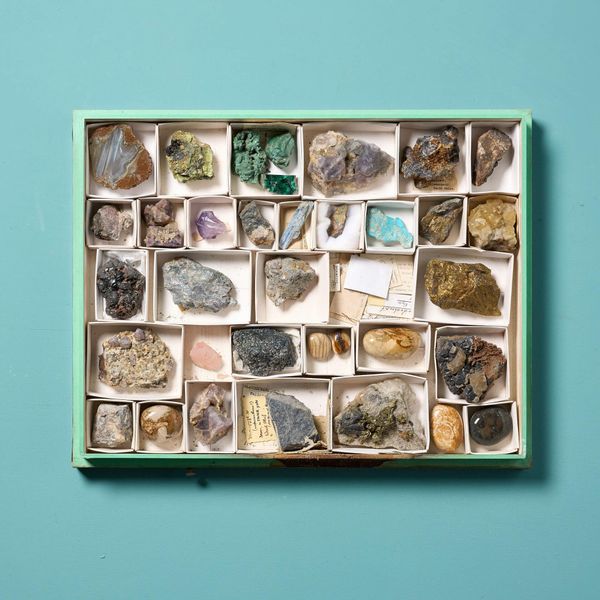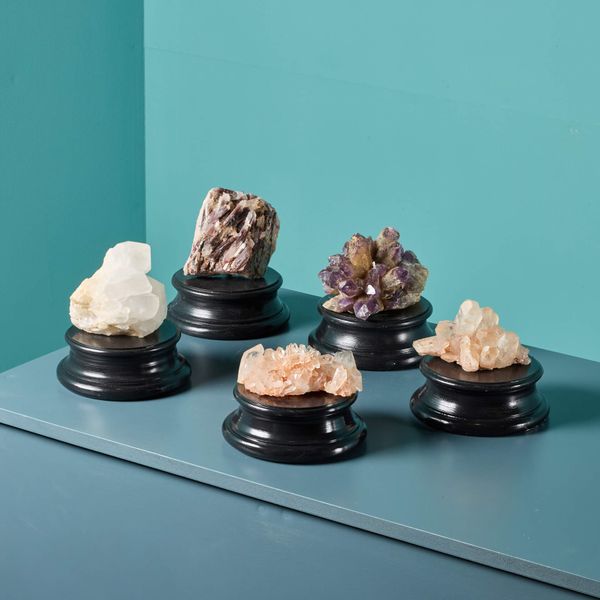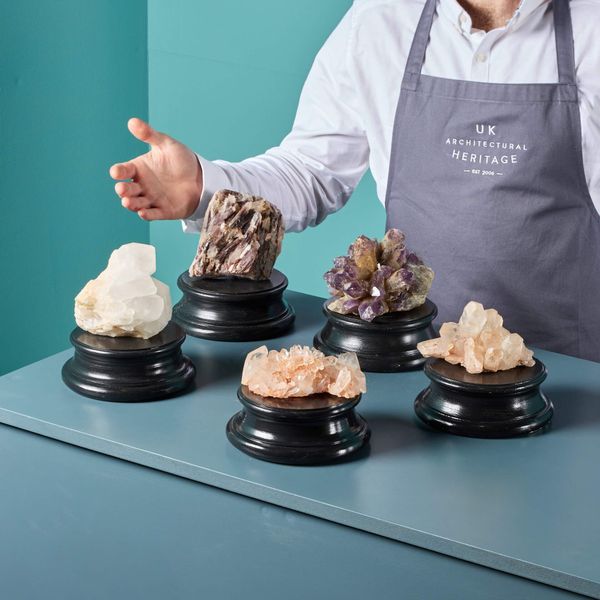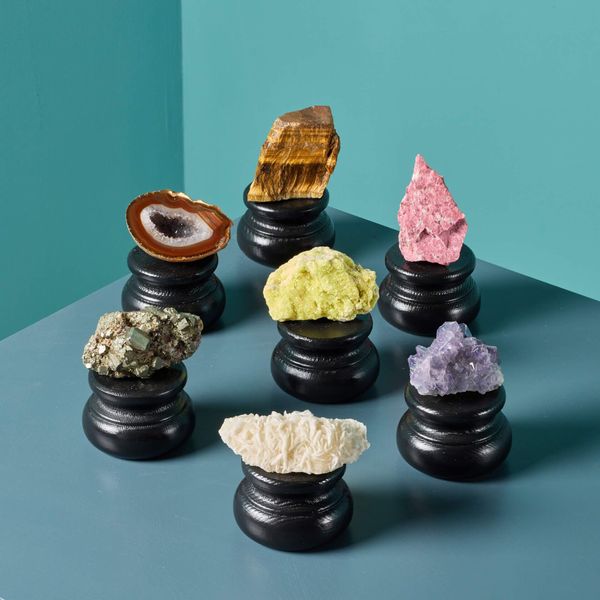About this piece
back to topA collection of museum minerals in a display case. Presented in a sleek glazed case, the set includes 48 European minerals, including a gold vial, a rock with traces of gold, lapis lazurite, and pyrite with calcite, all with their own striking appearance. Each one is of a superb quality and worthy of a museum.
Moulded by nature over thousands of years, these 48 specimens showcase an impressive sculptural piece for an interior display or collectors cabinet.
More about the minerals inside…
Gold is a native element and precious metal, that has long been prized for its beauty, workability, and one of the first minerals used by prehistoric cultures.
Lazurite
Lazurite is the main component of lapis lazuli and accounts for the stones intense blue colour. The best quality lapis lazuli is intense dark blue, with minor patches of white calcite and brassy yellow pyrite.
Its powdered form was used for hundreds of years to make the pigment ultramarine, which has now been replaced by a synthetic alternative. The first eye shadow was made from lapis lazuli. It was also used for pigments and medicine.
Calcite
Formed over millions of years, the natural calcite specimen showcases spectacular scalenohedral crystals – also known as dogtooth spar – and has a light coloured, almost translucent quality.
Pyrite
Pyrite comes from the Greek “pyr” for “fire”, because it creates sparks when struck with another mineral or metal. Its brassy-yellow metallic colour has in many cases lead to people mistaking it for gold, hence the common nickname ‘Fool’s gold’.
Additional information
Each mineral varies in size from about 2cm to 9cm.
The case is dated 1880 and in a Victorian style. The minerals are prehistoric.
